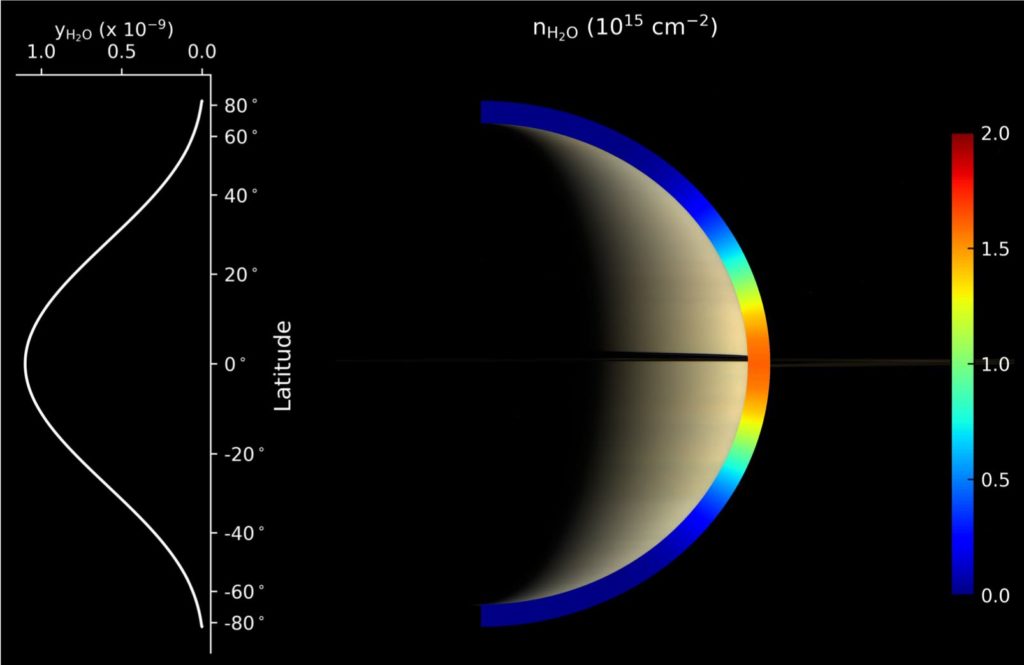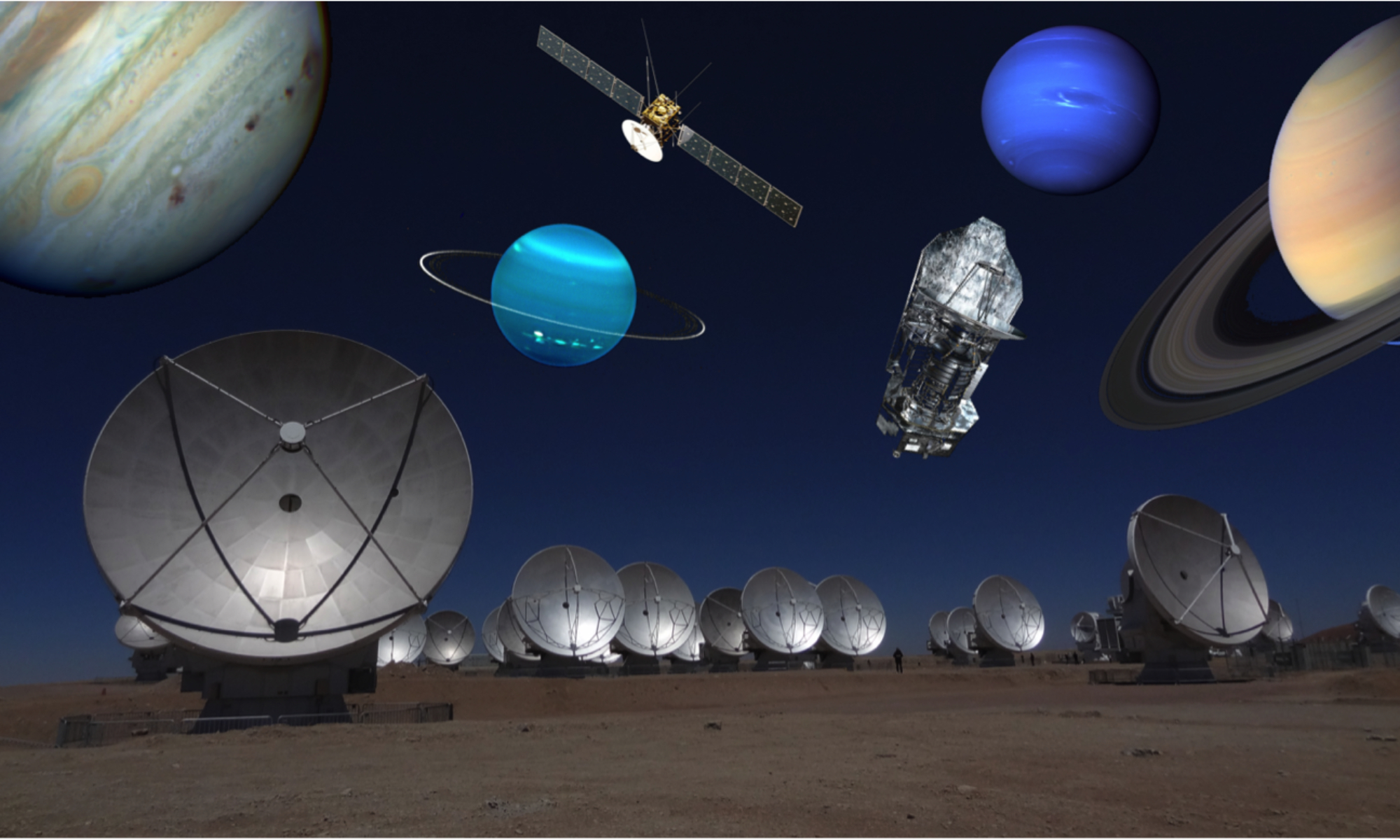The detection of water in the upper atmospheres (i.e. stratospheres) of the giant planets by the Infrared Space Observatory (ISO ; Feuchtgruber et al. 1997) raised the question of its origin. The cold trap at the tropopause of these planets prevents efficient transport of water from the planetary interiors (supposed to be water-rich) to the stratospheres because of condensation. The water observed by ISO is then external and results from the ablation of micrometeoroids from interplanetary dust or icy ring/satellite particles or from large comet impacts. While Jupiter’s stratospheric water is due to the Shoemaker-Levy 9 impacts in 1994 (refer to this post), the situation at Saturn remained unclear.
The Cassini mission detected water plumes at the South Pole of Enceladus, one of Saturn’s small moons, in 2006 (Porco et al. 2006, Waite et al. 2006, Hansen et al. 2006). Water then forms a torus at 4 Saturn radii, the orbital distance of Enceladus, as proved by the first observations of Saturn with the Herschel Space Observatory (Hartogh et al. 2011 ; refer to this post). Models then predicted that a fraction of this water would rain onto Saturn’s atmosphere (e.g. Cassidy and Johnson 2010), but a confirmation from direct observation was missing.
This missing piece came from Herschel mapping observations carried out in 2010-2011 with the PACS (Photodetector Array Camera and Spectrometer) instrument. The analysis of the data demonstrate that the meridional distribution of water in Saturn’s stratosphere is not uniform (as would be expected from interplanetary dust particles or an ancient comet impact): it peaks at the equator and can be modelled with a gaussian decrease towards the poles, with a half-width-at-half-maximum of 25° in latitude. This is consistent with model prediction and shows that a fraction of the water delivered by the Enceladus plumes eventually falls onto Saturn’s stratosphere

During its final orbits, Cassini detected an extraordinary influx of material coming from the ring plane (Waite et al. 2018, Perry et al. 2018). This influx is orders of magnitude stronger than the one originating from the Enceladus plumes. It seems to be quite recent and needs confirmation from new observations.
Reference: Cavalié et al. 2019, Astronomy and Astrophysics 630, A87.
[social_warfare buttons=”Facebook”]
Reference: Cavalié et al. 2019, Astronomy and Astrophysics 630, A87.

I do not even know how I ended up here, but I thought this post
was good. I don’t know who you are but definitely you’re going to
a famous blogger if you aren’t already 😉 Cheers!